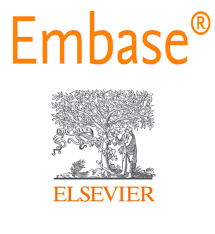TO STUDY OF THE RISK FACTORS AND MICROBIOLOGICAL DIAGNOSIS OF DIFFERENT TYPES OF CORNEAL ULCER
Keywords:
Corneal Ulcer, Staining, corneal scraping, Culture, TraumaAbstract
Objective: To study the epidemiology and microbiological diagnosis of different
types of corneal ulcer among patients visiting the OPD of Ophthalmology Dept.
Muzaffarnagar Medical College.
Methodology: This hospital-based observational study was conducted at the
Department of Ophthalmology, Muzaffarnagar Medical College and Hospital,
covering a population of aged 20-80 years visiting the Ophthalmology OPD. Data
collection spanned 18 months, with a sample size of 180. Patients were diagnosed
with corneal ulcers on slit lamp examination were subjected to a standardised
proforma, documenting sociodemographic details including name, age, sex,
occupation, address, presenting complaints, history of trauma, duration of symptoms,
predisposing factors and associated conditions, corneal scrapings were taken and sent
for microbiological analysis of microoraganisms causing these infections
Results: The study found that corneal trauma (61.1%) is the most common
predisposing factor and highest prevalence of fungal infections (53.9%), particularly
Aspergillus (42.2%) and Fusarium (27.8%). Out of 180 patients with corneal ulcers,
76.67% had positive culture reports. Majority of patients were in the age group of
50-61 years of age, agricultural workers, most of them were belonging to lower
socio-economic status and rural background with the majority of cases occurring in
males (56.1%).
Conclusion: This study emphasizes the dominance of fungal infections in corneal
ulcers, the critical role of trauma prevention, and the need for early microbiological
diagnosis to ensure timely and effective treatment. The findings can aid clinicians in
developing targeted therapeutic strategies and enhancing patient outcomes in corneal
ulcer management.
.png)









